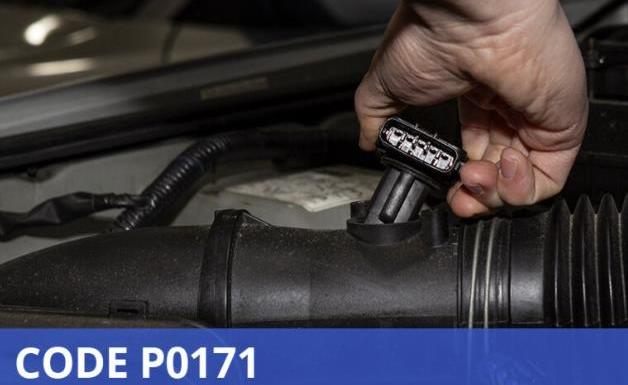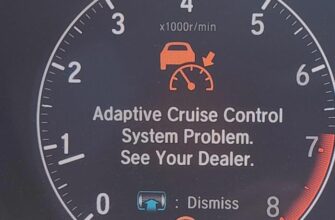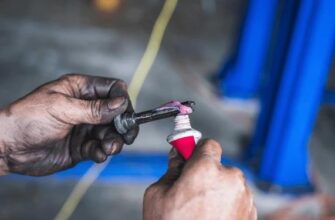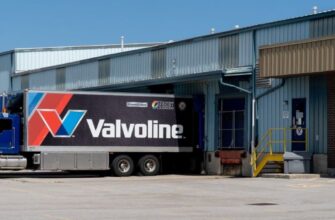Seeing the P0171 code pop up on your vehicle’s dashboard can be worrying. But don’t stress – this guide will walk you through everything you need to know to troubleshoot and repair the root cause like a pro.
We’ll cover what the P0171 lean code means, what triggers it, step-by-step diagnosis, and how to correctly fix any issues so you can clear the code and get your vehicle running smoothly again. Whether it ends up being a simple vacuum leak or a more in-depth sensor problem, we’ll make sure you have the knowledge to handle this error code with confidence.

Understanding the P0171 Code
P0171 stands for “System Too Lean (Bank 1)”. It indicates the engine air-fuel mixture is too lean and there is more air than fuel in the cylinders for optimal combustion.
Bank 1 refers to the side of the engine that houses the #1 cylinder. Most 4-cylinder and 6-cylinder engines have just one bank. V-style engines have two cylinder banks with one on each head.
The Engine Control Module (ECM) aims to maintain a perfect air-fuel ratio for clean, efficient combustion. It monitors the oxygen sensor signals and makes adjustments to keep the mixture at 14.7:1 air to fuel. But when the ratio skews too far lean, the P0171 code sets.
Why Proper Air-Fuel Mixture is Critical
The air-fuel mixture must be properly balanced for the engine to produce maximum power and efficiency. A lean condition causes incomplete combustion, reduces performance, wastes fuel, and can lead to overheating or engine damage over time.
It also causes increased emissions of NOx gases, so it hampers the emissions control system. That’s why promptly diagnosing and repairing the root cause of a P0171 code is important. It protects your engine, improves driveability, and keeps your vehicle environmentally friendly.
What Triggers the P0171 Lean Code?
There are several defective components or malfunctions that can cause an overly lean mixture and set the P0171 trouble code:
Vacuum Leaks – Leaks in vacuum hoses, PCV system, intake manifold gaskets, or throttle body allow unmetered air to enter the engine.
Exhaust Leaks – Cracks or loose fittings before the oxygen sensors allow oxygen to trickle back into the combustion chambers.
Faulty MAF Sensor – An inaccurate mass airflow sensor incorrectly measures lower airflow, signaling the ECM to reduce fuel delivery.

Dirty Fuel Injectors – Restricted injectors disrupt the spray pattern, limiting the amount of fuel entering the engine.

Low Fuel Pressure – Weak fuel pump, clogged filter or leaky injectors reduces fuel pressure causing a lean mixture.
EGR Valve Stuck Open – Allows too much exhaust gas to recirculate back into the intake, leaning out the mixture.

Now that we’ve covered some potential causes, let’s go through the key diagnostic steps to isolate the issue causing the P0171 trouble code.
Step-by-Step Diagnosis of P0171 Code
Methodically testing and inspecting different components is crucial to accurately pinpointing the reason for the lean air-fuel mixture:
1. Scan for Codes and Check Service History
Connect a scan tool and pull any stored diagnostic trouble codes. Look for other related lean codes like P0174. Check service records for recent intake or exhaust repairs that may be related.
2. Perform a Visual Inspection
Inspect all vacuum lines, hoses, and connections for cracks, damage, or disconnections. Look for leaks in the intake manifold gaskets or exhaust components. Check for signs of loose wiring or rodent damage.
3. Check for Vacuum Leaks
Use a smoke machine to inject non-toxic vapor into the intake system while watching for any escaping smoke. Target areas like the PCV valve, brake booster line, throttle body gaskets, and intake manifold ports.
4. Pressurize the Intake
Using a hand-held pressure tester, pressurize the air intake and listen for any hissing indicating a major vacuum leak. Spray soapy water near hoses, gaskets and fittings to check for bubble formation.
5. Monitor Short and Long Term Fuel Trims
Connect a professional scan tool and analyze the short and long term fuel trim values while idling and driving. High positive percentages confirm the ECM is adding more fuel to compensate for a lean condition.
6. Evaluate the MAF Sensor
Compare MAF sensor readings with an accurate reference like measured airflow or speed-density values. Look for contaminated sensing elements or improperly calibrated units. Swap it with a known good sensor to confirm operation.
7. Check for Exhaust Leaks
Run the engine and listen for an audible hissing noise indicating a crack or leak ahead of the post-cat oxygen sensors. Use a IR temp gun to check for cooling and tighten clamps or gaskets as needed.

8. Perform a Fuel Pressure Test
Verify fuel pressure stays within specifications when idling, cranking and at wide open throttle. Check the filter, pump, volume output, and injector flow pattern for any issues restricting fuel delivery.
9. Inspect the EGR System
Check the EGR valve, control solenoid, passages and pintle for sticking, blockages, or leaks that could cause it to remain open and introduce excess exhaust gases.
10. Evaluate Oxygen Sensor Readings
Graph the O2 sensor data to look for sluggish response times, irregular waveform patterns, or any sensor readings pegging lean. Swap their positions to isolate faults.
By working through these key diagnostic steps, you can isolate whether the P0171 is being caused by a vacuum leak, exhaust leak, sensor issue, fuel delivery problem or internal engine issue. Next we’ll go over how to fix some of the most common causes.
How to Fix a P0171 Lean Code
Once the root cause of the lean condition is found, repairs can be made to correct the issue:
For vacuum leaks – Tighten loose clamps, replace damaged vacuum hoses, change intake gaskets, or reseal any identified leaks allowing unmetered air to enter. Confirm leaks are fully sealed through retesting.
For exhaust leaks – Tighten flanges and brackets on exhaust components before the oxygen sensors. Replace any crush gaskets or damaged exhaust pipes allowing air intrusion. Verify O2 sensor readings return to normal switching patterns.
For MAF sensor faults – Try cleaning the MAF sensor wiring and sensing elements using aerosol cleaner and mass air flow cleaner fluid. If still faulty, install a new OEM-equivalent replacement MAF calibrated for your vehicle.
For fuel delivery issues – Replace the fuel filter if dirty. Test the fuel pump pressure and volume output while actuating the injectors. Replace injectors, pump or regulator as needed if performance is outside specifications.
For EGR faults – Clean carbon buildup from the EGR valve pintle and passages. Replace the valve and solenoid if still malfunctioning. Verify it is closing properly through visual inspection and testing.
For oxygen sensor issues – Replace any sluggish or damaged O2 sensors that are causing inaccurate readings. Use a scope to ensure new sensors are switching properly and reporting within range.
Once any damaged or faulty components are replaced, clear the P0171 code and take the vehicle for a test drive. Carefully monitor engine performance and fuel trims to verify the lean condition is resolved.
FAQ About Repairing P0171 Codes:
Here are some frequent questions and answers about diagnosing and fixing P0171 lean mixture trouble codes:
Q: Will leaky fuel injectors cause a P0171?
A: Yes, leaky injectors allow fuel to escape the cylinders unburned which signals to the ECM there is not enough fuel entering (a lean condition).
Q: Can a P0171 be fixed by simply adding more fuel?
A: No, adding fuel just masks the underlying issue. The proper diagnostic steps must be followed to identify the true root cause, or the code will eventually return.
Q: Is it safe to drive with a pending P0171 code?
A: Generally it’s OK for short trips, but the lean mixture will reduce engine performance and economy. It’s best to diagnose and repair the issue as soon as possible.
Q: Does a P0171 code require emission testing?
A: Most likely yes, since it indicates the engine is operating outside normal parameters and emitting higher NOx levels. Fixing the root problem should allow it to pass testing again.
Q: How much does a P0171 diagnosis and repair typically cost?
A: Between $150 – $350 on average depending on whether it is just a vacuum leak or a more complex sensor or fuel system issue requiring component replacement.
Key Takeaways on Resolving P0171 Codes
- P0171 indicates an overly lean air/fuel mixture for Bank 1
- Vacuum leaks, exhaust leaks, MAF sensor issues, fuel delivery faults and EGR problems can cause it
- Use smoke testing and fuel trim data to identify any intake leaks
- Graph oxygen sensor data to pinpoint exhaust leaks or sensor issues
- Replace damaged hoses, gaskets, sensors and fuel components as needed
- Clear codes and verify normal operation after repairs are made
- Fixing P0171 codes restores engine performance and emissions compliance
Carefully following the diagnostic steps and repair procedures for a P0171 lean code is crucial to resolving the underlying issue. Focus on finding and fixing the root cause – not just masking symptoms. This will get your vehicle’s air-fuel mixture back into proper balance for optimized operation.








